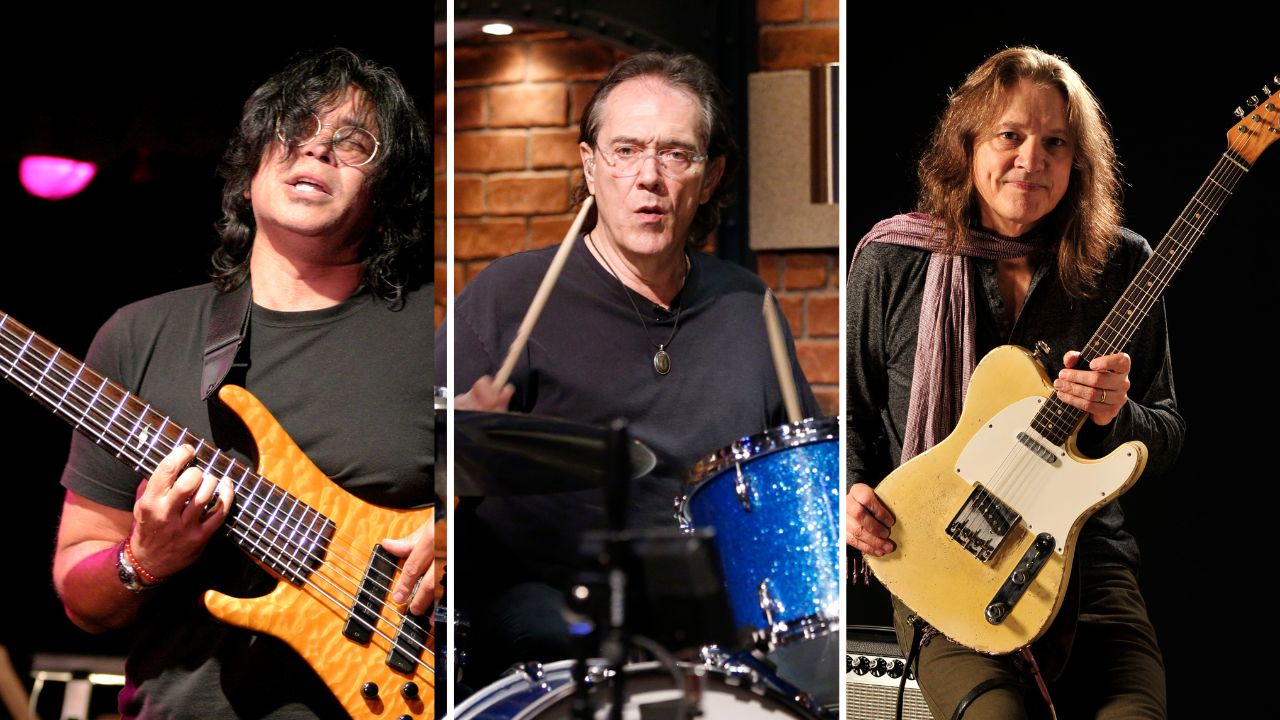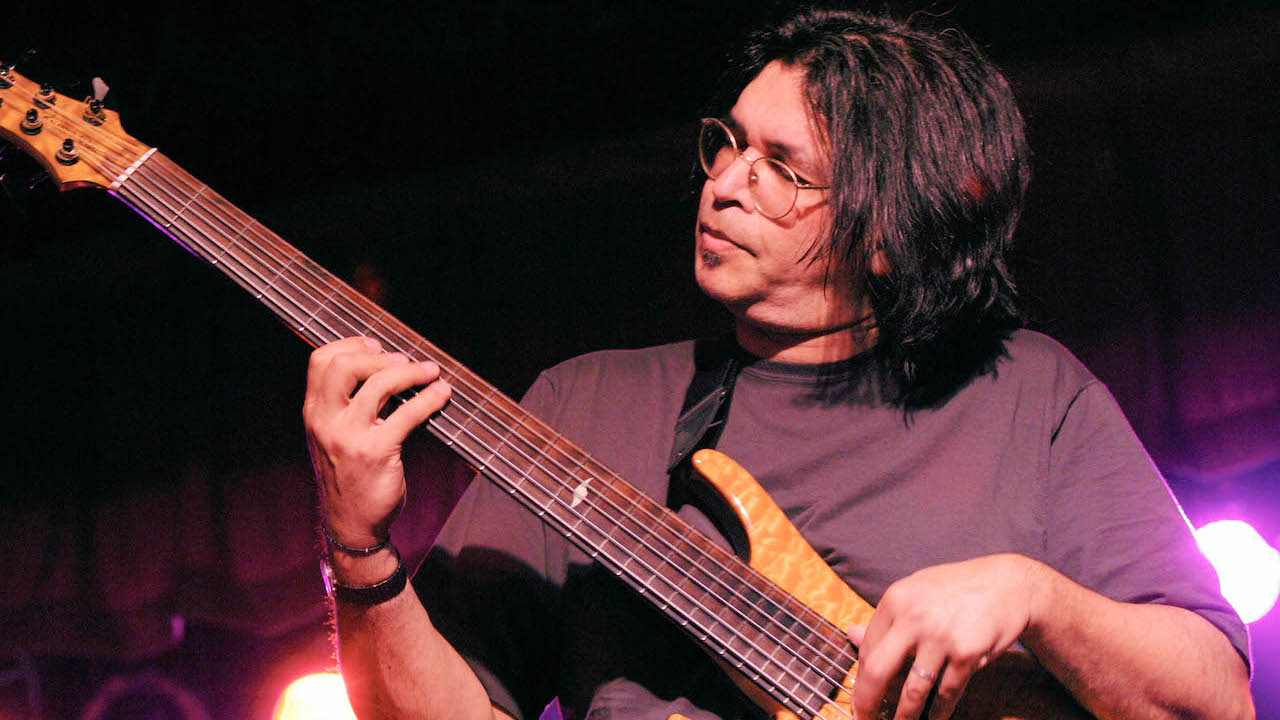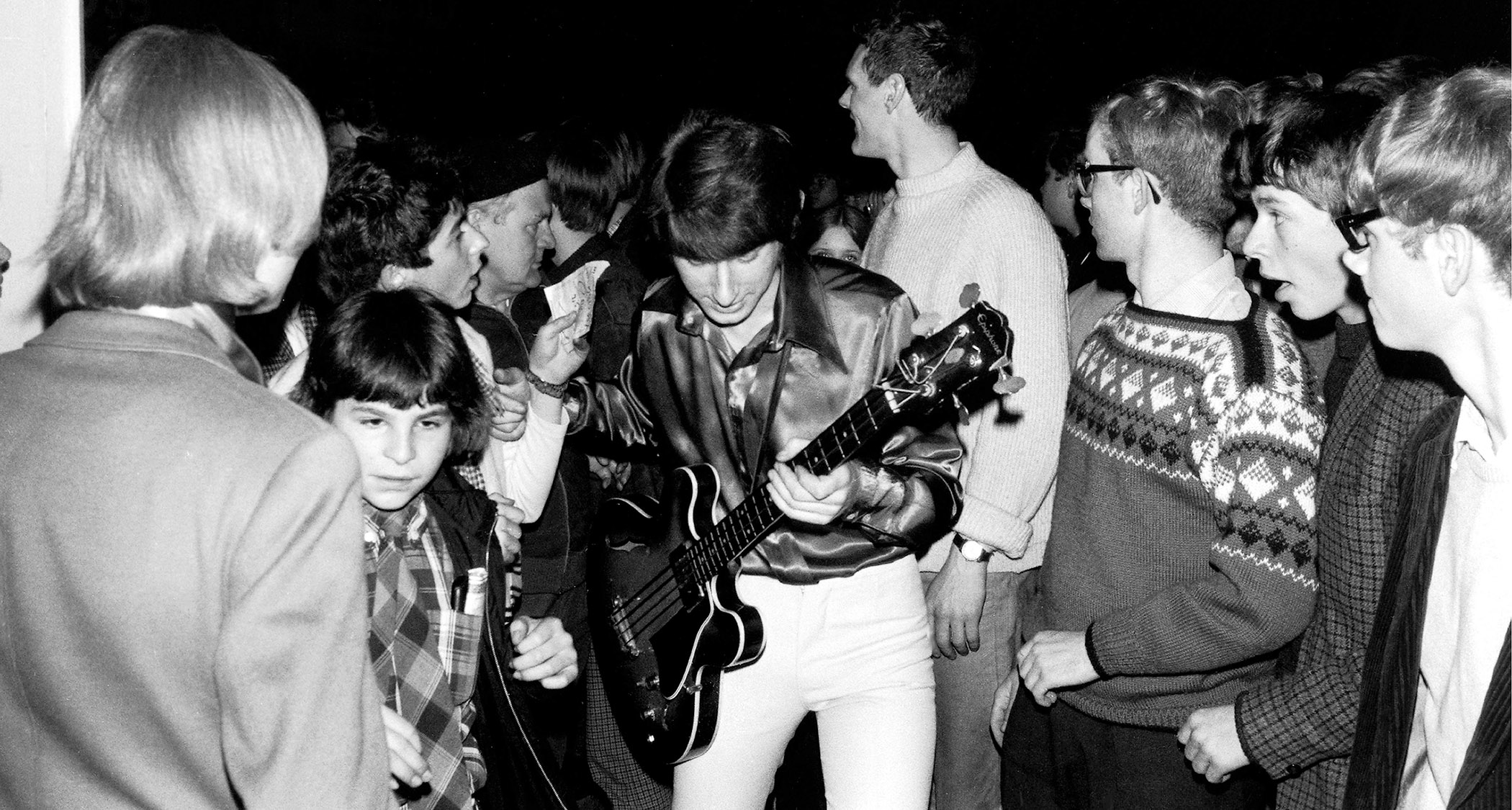“That song has a Led Zeppelin-meets-Frank-Zappa unison riff up front, but I tried to imagine what Krist Novoselic might play”: Fusion bass great Jimmy Haslip breaks down his 2001 project with Robben Ford and Vinnie Colaiuta
Jimmy Haslip is a lefty who plays a left-handed 6-string bass with the strings reversed

Jimmy Haslip, drummer Vinnie Colaiuta, and guitarist Robben Ford are studio-savvy musicians whose musical connections date back to the 1970s. Back in 2001, they decided to record as a trio for the first time. In only three days of basic tracking they put together a set of 10 eclectic tunes that featured eye-popping musicianship and, particularly in Haslip's bass parts, lots of space.
“We wrote the songs with space in mind, actually,” said Haslip, who produced Jing Chi. “I like to open up spaces to allow other instruments to speak melodically or rhythmically. Thinking in these terms provides plenty of room to have a musical conversation – in other words, it leaves room for each musician to make a statement. This is a prime rule in playing successfully within an ensemble.”
Haslip is a lefty who plays a left-handed 6-string bass guitar with the strings reversed – his low B string is where the high C is normally located and vice-versa. On all of the Jing Chi tracks he played his old pre-Gibson Tobias, a prototype of sorts for the Tobias Killer B, which Haslip helped design. He changed basses only once, pulling out a Roscoe 6 for the Go Figure bass solo.

Haslip split his signal and went into two Dis: a stock Cabletech direct box and a Westlink DI. He recorded the Cabletech signal direct to Pro Tools, while the Westlink's signal went to an SWR Super Redhead amp with the tweeter turned all the way down, which was mic'd in a studio closet.
Back in June 2002, Jimmy Haslip offered up a track-by-track tour of the album.
1. The Hong Kong Incident
“This was a first take. The unison lines Robben and I play in the A sections create a lot of energy as well as tension. Then it opens up for the solo section, which we built primarily on my bassline.
“I've always been inspired by Larry Graham; that octave figure I play (at 1:46) constituted a form for Robben to solo over and Vinnie to play off of. We opened up the outro vamp and set it up for Vinnie to improvise until we dynamically bring down the music for a spacious, trippy ending.”
All the latest guitar news, interviews, lessons, reviews, deals and more, direct to your inbox!
2. Stan Key
“A funky little tune that started with a loop and sequence Vinnie had in his computer. He had an interesting idea to record some tweaked snare drumming, and we added that on the end, which gave the song an interesting fadeout.
“At first I didn't have a good handle on what to play, but eventually I came up with a line based on an arpeggiated-picking, almost folk-guitar technique I use: I pick the lower notes with my index and middle fingers, and I use my thumb to pop high notes. I use that for much of the tune's groove section.”
3. Tengoku
“We improvised the intro, which sets up the unusual progression that's built on an Oriental-sounding scale. Again, we opened up everything with a jam on my bassline. It's all in 4/4, but it's rhythmically altered.
“My muting technique involves my fretting hand; in my case it's my right hand. When I'm muting like this I use only my index finger to fret the notes. Plucking the strings aggressively results in an intense thumping sound, like tuned bass drums. I can also mute the strings to the extreme to create dead notes whose sole purpose is to reinforce a rhythmic drum pattern.”
“We decided it got kind of redundant for me to start out with that bass figure and play it for the whole song. I ended up messing with it throughout the tune until the end, when I finally get to the original bass figure I wrote (at 7:40).
“We recorded the tune in one take. The form was basically improvised, and we cued each other visually. It was an experiment, but we like the way it worked.”
4. Crazy House
“This bassline was inspired by my listening to James Brown for many years. A lot of my roots are in R&B, and that comes out from time to time in a song like Crazy House, which sounds almost like an old Bar-Kays groove.
“This jam happened out of the blue after a short discussion about an idea and a form. We liked it so much that we just kept it intact. Vinnie and I added some samples that gave the simple jam session a nice dimension.”
5. Going Nowhere
“Robben wrote this one, so I played what he wrote pretty much verbatim. I wanted it to sound more synth-like, so I used muting. I also mixed the bass a little hotter than usual; I wanted to accentuate the instrument's percussive nature to bring out the synth-like quality.
“Playing-wise, I was inspired by Jack Bruce's early work with Cream. I like the simplicity of the progression and the groove, and I also like Robben's positive, colorful imagery in the lyric.”
6. Go Figure
“During a jam Robben started playing this chordal pattern; it sounded familiar, but we weren't sure what it was. Than it hit us – it was the Goldfinger theme!
“This tune has my only solo on the record. I actually wasn't thinking of taking any solos on this recording; I just wanted to establish a strong groove, as I feel comfortable in that role and don't feel the need to solo on everything.
“I wanted a slightly different sound for the solo, so I chose my Roscoe 6-string. The Roscoe has a baritone-guitar-like sound, and I thought it would make for a nice change of pace. Plus, I've been playing that bass on most of my live gigs and thought it would be the most comfortable to use as a solo instrument. I thought of using a fretless, but I chose to stay with the fretted sound.”
7. Man in the Ring
“This song reminds me of a unique interpretation of the ZZ Top sound. We were jamming and Vinnie was playing a hip groove in seven, and I joined in and found this little bassline that repeats.
“This tune was hard to feel; I wanted to play something solid, so that if Vinnie started displacing eighth-notes – which he does regularly – I could hold everything down and not lose the pocket. That got pretty hairy during Robben's solo. At one point I really didn't know where one was, but I was totally focused on what I was playing. I knew where I was and trusted Vinnie to know where one was, and fortunately it worked out.”
8. In My Dream
“This ambient piece was inspired by many hours of listening to Radiohead. You can hear a slightly different bass sound on this track: I wrote the tune on my Akai MPC 2000 home workstation and then transferred the tracks to Pro Tools. But I wanted to emulate the synth-bass sound from the demo, so I played my MTD 6 again with a muted technique.
“We kept the original synth bass during the mix, but I featured the electric bass with the synth sound just shadowing the line. We also used a bit more compression on the bass to make it pop out.
“For the bridge I got the swells on the long, sustained notes with a volume pedal, and I overdubbed some picked notes as well. On the fade/vamp I play the bassline an octave lower than the synth to give the ending some serious girth.”
9. Train Song
“I came up with a slightly altered I-IV-V blues. I wanted it to be like a Cream tune, but then Robben wanted to put on some Spanish guitar, so it became more of a flamenco Cream song! I play just a simple blues-rock bass part. Our engineer, Rich Breen, treated the acoustic guitar with reverse delays, which created an unusual environment for the melody sections.”
10. Aurora
“Vinnie came up with this one, which has a serious Led-Zeppelin-meets-Frank-Zappa unison riff up front. The body of the tune kind of reminded me of Nirvana, so I tried to imagine what Krist Novoselic might play.
“Vinnie thought he could build a solo around the unison figure at the end, so we constructed a form for him to blow over. I thought it would make for a powerful, surprise ending to an eclectic body of work. If you listen closely, you can hear Vinnie's reaction.”
Chris Jisi was Contributing Editor, Senior Contributing Editor, and Editor In Chief on Bass Player 1989-2018. He is the author of Brave New Bass, a compilation of interviews with bass players like Marcus Miller, Flea, Will Lee, Tony Levin, Jeff Berlin, Les Claypool and more, and The Fretless Bass, with insight from over 25 masters including Tony Levin, Marcus Miller, Gary Willis, Richard Bona, Jimmy Haslip, and Percy Jones.










